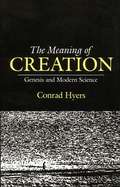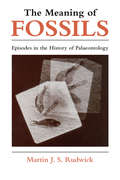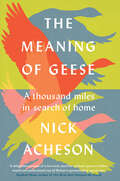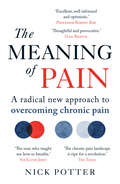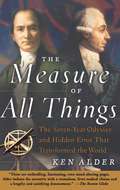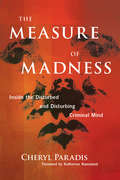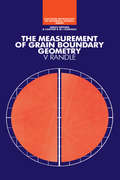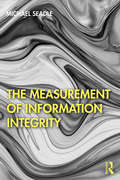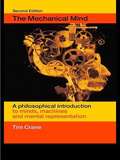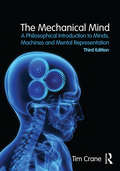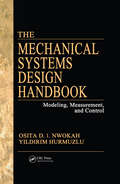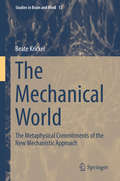- Table View
- List View
The Meaning of Creation (Genesis and Modern Science)
by Conrad HyersAnyone who would propose to offer an interpretation of what the Genesis accounts of creation "really mean" must do so with considerable caution. There have been many different interpretations sent back to Europe, so to speak, not only of the meaning of the whole but of every verse, even every word. Perhaps this great variety of interpretation is an indication of the richness and subtlety of the creation stories themselves, which can suggest such a diversity of meanings. Perhaps, too, this variety is a reflection of the interpreters themselves, coming to these ancient texts from such a diversity of ages, cultures, philosophies, academic fields, methodologies, and religious persuasions. As in the case of the Dutch anthropologist, it is very easy to shape materials which come to us from a distant culture, language, and time to fit our own modes of thought and the issues that concern us.
The Meaning of Fossils: Episodes in the History of Palaeontology
by Martin J.S. Rudwick"It is not often that a work can literally rewrite a person's view of a subject. And this is exactly what Rudwick's book should do for many paleontologists' view of the history of their own field."—Stephen J. Gould, Paleobotany and Palynology "Rudwick has not merely written the first book-length history of palaeontology in the English language; he has written a very intelligent one. . . . His accounts of sources are rounded and organic: he treats the structure of arguments as Cuvier handled fossil bones."—Roy S. Porter, History of Science
The Meaning of Fossils: Episodes in the History of Palaeontology, Second Edition
by Martin J. S. Rudwick"It is not often that a work can literally rewrite a person's view of a subject. And this is exactly what Rudwick's book should do for many paleontologists' view of the history of their own field. "—Stephen J. Gould, Paleobotany and Palynology "Rudwick has not merely written the first book-length history of palaeontology in the English language; he has written a very intelligent one. . . . His accounts of sources are rounded and organic: he treats the structure of arguments as Cuvier handled fossil bones. "—Roy S. Porter, History of Science
The Meaning of Geese: A Thousand Miles in Search of Home
by Nick Acheson‘A magisterial diary for bird lovers.’ Observer ⭐⭐⭐⭐ The Telegraph As seen on BBC Winterwatch 2023 ‘Honest, human and heart-grabbing. I loved this book so much.’ Sophie Pavelle, author of Forget Me Not ‘Delightful’ Stephen Moss, author of Ten Birds that Changed the World ‘Fascinating and thought-provoking’ Jake Fiennes, author of Land Healer ‘Awe-filled and absorbing’ Nicola Chester, author of On Gallows Down The Meaning of Geese is a book of thrilling encounters with wildlife, of tired legs, punctured tyres and inhospitable weather. Above all, it is the story of Nick Acheson’s love for the land in which he was born and raised, and for the wild geese that fill it with sound and spectacle every winter. Renowned naturalist and conservationist Nick Acheson spent countless hours observing and researching wild geese, transported through all weathers by his mother’s 40-year-old trusty red bicycle. He meticulously details the geese’s arrival, observing what they mean to his beloved Norfolk and the role they play in local people’s lives – and what role the birds could play in our changing world. During a time when many people faced the prospect of little work or human contact, Nick followed the pinkfeet and brent geese that filled the Norfolk skies and landscape as they flew in from Iceland and Siberia. In their flocks, Nick encountered rarer geese, including Russian white-fronts, barnacle geese and an extremely unusual grey-bellied brant, a bird he had dreamt of seeing since thumbing his mother’s copy of Peter Scott’s field guide as a child. To honour the geese’s great athletic migrations, Nick kept a diary of his sightings as well as the stories he discovered through the community of people, past and present, who loved them, too. Over seven months Nick cycles over 1,200 miles – the exact length of the pinkfeet’s migration to Iceland.
The Meaning of Geese: A Thousand Miles in Search of Home
by Nick Acheson‘A magisterial diary for bird lovers.’ ObserverWINNER – BOOK OF THE YEAR - East Anglian Book Awards 2023⭐⭐⭐⭐ The TelegraphAs seen on BBC Winterwatch 2023‘Honest, human and heart-grabbing. I loved this book so much.’ Sophie Pavelle, author of Forget Me Not‘Delightful’ Stephen Moss, author of Ten Birds that Changed the World‘Fascinating and thought-provoking’ Jake Fiennes, author of Land Healer‘Awe-filled and absorbing’ Nicola Chester, author of On Gallows DownThe Meaning of Geese is a book of thrilling encounters with wildlife, of tired legs, punctured tyres and inhospitable weather. Above all, it is the story of Nick Acheson’s love for the land in which he was born and raised, and for the wild geese that fill it with sound and spectacle every winter.Renowned naturalist and conservationist Nick Acheson spent countless hours observing and researching wild geese, transported through all weathers by his mother’s 40-year-old trusty red bicycle. He meticulously details the geese’s arrival, observing what they mean to his beloved Norfolk and the role they play in local people’s lives – and what role the birds could play in our changing world. During a time when many people faced the prospect of little work or human contact, Nick followed the pinkfeet and brent geese that filled the Norfolk skies and landscape as they flew in from Iceland and Siberia. In their flocks, Nick encountered rarer geese, including Russian white-fronts, barnacle geese and an extremely unusual grey-bellied brant, a bird he had dreamt of seeing since thumbing his mother’s copy of Peter Scott’s field guide as a child.To honour the geese’s great athletic migrations, Nick kept a diary of his sightings as well as the stories he discovered through the community of people, past and present, who loved them, too. Over seven months Nick cycles over 1,200 miles – the exact length of the pinkfeet’s migration to Iceland.
The Meaning of Human Existence
by Edward O. WilsonNational Book Award Finalist. How did humanity originate and why does a species like ours exist on this planet? Do we have a special place, even a destiny in the universe? Where are we going, and perhaps, the most difficult question of all, "Why?" In The Meaning of Human Existence, his most philosophical work to date, Pulitzer Prize-winning biologist Edward O. Wilson grapples with these and other existential questions, examining what makes human beings supremely different from all other species. Searching for meaning in what Nietzsche once called "the rainbow colors" around the outer edges of knowledge and imagination, Wilson takes his readers on a journey, in the process bridging science and philosophy to create a twenty-first-century treatise on human existence--from our earliest inception to a provocative look at what the future of mankind portends. Continuing his groundbreaking examination of our "Anthropocene Epoch," which he began with The Social Conquest of Earth, described by the New York Times as "a sweeping account of the human rise to domination of the biosphere," here Wilson posits that we, as a species, now know enough about the universe and ourselves that we can begin to approach questions about our place in the cosmos and the meaning of intelligent life in a systematic, indeed, in a testable way. Once criticized for a purely mechanistic view of human life and an overreliance on genetic predetermination, Wilson presents in The Meaning of Human Existence his most expansive and advanced theories on the sovereignty of human life, recognizing that, even though the human and the spider evolved similarly, the poet's sonnet is wholly different from the spider's web. Whether attempting to explicate "The Riddle of the Human Species," "Free Will," or "Religion"; warning of "The Collapse of Biodiversity"; or even creating a plausible "Portrait of E.T.," Wilson does indeed believe that humanity holds a special position in the known universe. The human epoch that began in biological evolution and passed into pre-, then recorded, history is now more than ever before in our hands. Yet alarmed that we are about to abandon natural selection by redesigning biology and human nature as we wish them, Wilson soberly concludes that advances in science and technology bring us our greatest moral dilemma since God stayed the hand of Abraham.
The Meaning of Liberty Beyond Earth
by Charles S. CockellThe purpose of this book is to initiate a new discussion on liberty focusing on the infinite realms of space. The discussion of the nature of liberty and what it means for a human to be free has occupied the minds of thinkers since the Enlightenment. However, without exception, every one of these discussions has focused on the character of liberty on the Earth. The emergence of human space exploration programs in the last 40-50 years raise a fundamental and new question: what will be the future of liberty in space? This book takes the discussion of liberty into the extraterrestrial environment. In this book, new questions will be addressed such as: Can a person be free when the oxygen the individual breathes is the result of a manufacturing process controlled by someone else? Will the interdependence required to survive in the extremities of the extraterrestrial environment destroy individualism? What are the obligations of the individual to the extraterrestrial state? How can we talk of extraterrestrial liberty when everyone is dependent on survival systems?
The Meaning of Movement: Developmental and Clinical Perspectives of the Kestenberg Movement Profile
by Janet Kestenberg Amighi Susan Loman Penny Lewis K. Mark SossinThe primary objective of this book is to present the Kestenberg Movement Profile (KMP)--a multi-tiered system for the notation of observed movement patterns, classification of these patterns, and analysis of an individual's movement repertoire.
The Meaning of Pain: A radical new approach to overcoming chronic pain
by Nick PotterWe all fear pain and we will do almost anything to avoid it. In The Meaning of Pain, renowned osteopath Nick Potter presents a radical new approach to treating chronic pain. He draws on insights from biology, evolution and social behaviour to help us understand why pain is essential to our survival, and how we can manage our experience of it. In this sage and enlightening book, drawing on 25 years of clinical experience and success stories from his consulting room, Potter presents a timely, compelling roadmap for wellbeing, showing us how to break the vicious cycle of stress, pain and anxiety before the damage is done.
The Meaning of Pain: A radical new approach to overcoming chronic pain
by Nick PotterWe all fear pain and we will do almost anything to avoid it. In The Meaning of Pain, renowned osteopath Nick Potter presents a radical new approach to treating chronic pain. He draws on insights from biology, evolution and social behaviour to help us understand why pain is essential to our survival, and how we can manage our experience of it. In this sage and enlightening book, drawing on 25 years of clinical experience and success stories from his consulting room, Potter presents a timely, compelling roadmap for wellbeing, showing us how to break the vicious cycle of stress, pain and anxiety before the damage is done.
The Meaning of Relativity: Including the Relativistic Theory of the Non-Symmetric Field - Fifth Edition (Princeton Science Library #32)
by Albert EinsteinIn 1921, five years after the appearance of his comprehensive paper on general relativity and twelve years before he left Europe permanently to join the Institute for Advanced Study, Albert Einstein visited Princeton University, where he delivered the Stafford Little Lectures for that year. These four lectures constituted an overview of his then-controversial theory of relativity. Princeton University Press made the lectures available under the title The Meaning of Relativity, the first book by Einstein to be produced by an American publisher. As subsequent editions were brought out by the Press, Einstein included new material amplifying the theory. A revised version of the appendix "Relativistic Theory of the Non-Symmetric Field," added to the posthumous edition of 1956, was Einstein's last scientific paper.
The Meaning of it All: Thoughts of a Citizen-Scientist
by Richard P. FeynmanMany appreciate Richard P. Feynman's contributions to twentieth-century physics, but few realize how engaged he was with the world around him--how deeply and thoughtfully he considered the religious, political, and social issues of his day. Now, a wonderful book--based on a previously unpublished, three-part public lecture he gave at the University of Washington in 1963--shows us this other side of Feynman, as he expounds on the inherent conflict between science and religion, people's distrust of politicians, and our universal fascination with flying saucers, faith healing, and mental telepathy. Here we see Feynman in top form: nearly bursting into a Navajo war chant, then pressing for an overhaul of the English language (if you want to know why Johnny can't read, just look at the spelling of "friend"); and, finally, ruminating on the death of his first wife from tuberculosis. This is quintessential Feynman--reflective, amusing, and ever enlightening.
The Meanings of a Disaster: Chernobyl and Its Afterlives in Britain and France (Environment in History: International Perspectives #20)
by Karena KalmbachThe disaster at the Chernobyl nuclear power plant was an event of obviously transnational significance—not only in the airborne particulates it deposited across the Northern hemisphere, but in the political and social repercussions it set off well beyond the Soviet bloc. Focusing on the cases of Great Britain and France, this innovative study explores the discourses and narratives that arose in the wake of the incident among both state and nonstate actors. It gives a thorough account of the stereotypes, framings, and “othering” strategies that shaped Western European nations’ responses to the disaster, and of their efforts to come to terms with its long-term consequences up to the present day.
The Measles Book: Thirty-Five Secrets the Government and the Media Aren't Telling You about Measles and the Measles Vaccine (Children’s Health Defense)
by Children's Health DefenseDiscover thirty-five secrets that the media, US government, and Big Pharma don't want you to know about vaccines. Measles! We all have seen or heard the scary stories about &“outbreaks&” in the media. It has even been declared a &“public health emergency&” at various times. Is it true? Are we and our children at risk? The Measles Book: Thirty-Five Secrets the Government and the Media Aren&’t Telling You about Measles and the Measles Vaccine will help you answer these questions. You will find out if this is just another example of the media, government, and industry misleading us or whether we really have a lot to worry about. The Measles Book presents reliable medical information from the most credible sources available. It is intended to help you make an informed choice about vaccinating your child. The main focus is measles, but many of the issues are relevant to other childhood vaccines. Within the book's pages, the reader will discover thirty-five secrets being kept from the general public about childhood vaccines, especially the measles vaccine. Just a sampling of these secrets include: Vaccines are not safe for every child and the government and pharmaceutical companies have known this for years.Some children will get injured or die from vaccines and the government and pharmaceutical companies know this, too.Pharmaceutical companies have developed an incredible way to make money from vaccines, and not be held accountable.When a child is injured or killed by a vaccine, the pharmaceutical company does not pay for the damage it caused—we do! Learn the other thirty-one secrets when you read The Measles Book by Children's Health Defense, a nonprofit organization committed to the health of our children and challenging misinformation spread by Big Pharma, the government, and the media. The information in The Measles Book is vital for parents to know so they can make informed decisions for their children.
The Measure of All Things: The Seven-Year Odyssey and Hidden Error That Transformed the World
by Ken AlderIn June 1792, amidst the chaos of the French Revolution, two intrepid astronomers set out in opposite directions on an extraordinary journey. Starting in Paris, Jean-Baptiste-Joseph Delambre would make his way north to Dunkirk, while Pierre-François-André Méchain voyaged south to Barcelona. Their mission was to measure the world, and their findings would help define the meter as one ten-millionth of the distance between the pole and the equator--a standard that would be used "for all people, for all time." The Measure of All Things is the astonishing tale of one of history's greatest scientific adventures. Yet behind the public triumph of the metric system lies a secret error, one that is perpetuated in every subsequent definition of the meter. As acclaimed historian and novelist Ken Alder discovered through his research, there were only two people on the planet who knew the full extent of this error: Delambre and Méchain themselves. By turns a science history, detective tale, and human drama, The Measure of All Things describes a quest that succeeded as it failed--and continues to enlighten and inspire to this day.
The Measure of God: History's Greatest Minds Wrestle with Reconciling Science & Religion
by Larry WithamThe Measure of God is a lively historical narrative offering the reader a sense for what has taken place in the God and science debate over the past century. Modern science came of age at the cusp of the twentieth century. It was a period marked by discovery of radio waves and x rays, use of the first skyscraper, automobile, cinema, and vaccine, and rise of the quantum theory of the atom. This was the close of the Victorian age, and the beginning of the first great wave of scientific challenges to the religious beliefs of the Christian world. Religious thinkers were having to brace themselves. Some raced to show that science did not undermine religious belief. Others tried to reconcile science and faith, and even to show that the tools of science, facts and reason, could support knowledge of God. In the English speaking world, many had espoused such a project, but one figure stands out. Before his death in 1887, the Scottish judge Adam Gifford endowed the Gifford Lectures to keep this debate going, a science haunted debate on "all questions about man's conception of God or the Infinite." The list of Gifford lecturers is a veritable Who's Who of modern scientists, philosophers and theologians: from William James to Karl Barth, Albert Schweitzer to Reinhold Niebuhr, Niels Bohr to Iris Murdoch, from John Dewey to Mary Douglas.
The Measure of Madness: Inside the Disturbed and Disturbing Criminal Mind
by Katherine Ramsland Dr Cheryl Paradis"The defendant told the jury that he did not kill girlfriend. He did, however, admit to dismembering her, boiling her bones, and hiding them in the Port Authority locker." At the heart of countless crimes lies the mystery of the human mind. In this eye-opening book, Dr. Cheryl Paradis draws back the curtain on the fascinating world of forensic psychology and revisits the most notorious and puzzling cases she has handled in her multifaceted career. "Out it all came, a slew of bizarre comments about the electronic chips implanted in his brain." Her riveting, sometimes shocking stories reveal the crucial and often surprising role forensic psychology plays in the pursuit of justice. Sometimes the accused believe their own bizarre lies, creating a world that pushes them into frightening, violent crimes. "My client is charged with murder and tells me he is a descendent of kings. He says he is of royal blood. Can you evaluate him for an insanity defense?" Join Dr. Paradis in a stark concrete cell, with the accused handcuffed to a chair opposite her, as she takes on the daunting task of mapping the suspect's madness--or exposing it as fakery. Have a front-row seat in a tense, packed courtroom, where her testimony can determine an individual's fate. The criminal mind has never been so intimately revealed--or so darkly compelling. "A forensic psychologist reveals the dark and troubling human mind. Fascinating."--Robert K. Tanenbaum The Experts PraiseThe Measure of Madness"Fascinating . . . A forensic psychologist reveals the dark and powerful motives that challenge our justice system and opens up the troubling workings of the human mind."--Robert K. Tanenbaum, author of Capture"Compelling . . . Dr. Cheryl Paradis offers a window into the world of a clinical psychologist who has made many assessments for the courts."--Katherine Ramsland, author of The Criminal Mind"Eloquent . . . Anyone concerned with the relationship between deviance and mental illness will find this excellent book to be of great value."--Simon Baatz, author of For the Thrill of It: Leopold, Loeb and the Murder that Shocked Chicago"Clearly written and comprehensive . . . Dr. Paradis skillfully leads the reader through the labyrinth of the psychotic criminal mind and the maze of the judicial system."--Barbara Kirwin, author of The Mad, the Bad, and the Innocent"Insightful, remarkable . . . not to be missed if you want to understand the real-world dramas that underlie criminal justice."--Barbara Oakley, author of Evil Genes"Informative, discussion-provoking . . . a much needed, intriguing collection of personal reflections as well as fascinating cases."--Thomas M. O'Rourke, Director of Forensic Psychiatry, Kings County Hospital Center"Riveting . . .Cheryl Paradis shows us a world rarely seen and one full of mystery."--John Coston, author of To Kill and Kill Again and Sleep My Child Forever"Lucid, intelligent, provocative . . . Cheryl Paradis is an articulate expert guide to the bizarre and routinely baffling world of irrational and aberrant crime."--Stephen G. Michaud, author of The Only Living Witness and Whisper of Fear"A marvelous book . . . a masterpiece that not only beautifully describes the people she examines but, just as importantly, fills in the dialogues between herself and others and includes her own thoughts and feelings. This book stands out."--Daniel W. Schwartz, M.D., Director (Ret.) of Forensic Psychiatry Service, Kings County Hospital"Written with clarity, objectivity, and expertise . . . Cheryl Paradis draws you into the fascinating world of the forensic psychologist and into the minds and often disturbing motives of the defendants she has examined."--Robert H. Berger, M.D., Clinical Professor of Psychiatry, New York University School of Medicine"Chilling . . . The Measure of Madness is an insider's view of a world few of us really know. Dr. Paradis makes clear that the reality of criminal forensic psychology is far different -- and far more fascinating -- than that portrayed in TV and movies. Fans of 'CSI' and 'Law and Order' as well as...
The Measurement of Grain Boundary Geometry
by Valerie RandleAs the selection of material for particular engineering properties becomes increasingly important in keeping costs down, methods for evaluating material properties also become more relevant. One such method examines the geometry of grain boundaries, which reveals much about the properties of the material.Studying material properties from their geometrical measurements, The Measurement of Grain Boundary Geometry provides a framework for a specialized application of electron microscopy for metals and alloys and, by extension, for ceramics, minerals, and semiconductors. The book presents an overview of the developments in the theory of grain boundary geometry and its practical applications in material engineering. It also covers the tunneling electron microscope (TEM), experimental aspects of data collection, data processing, and examples from actual investigations. Each step of the analysis process is clearly described, from data collection through processing, analysis, representation, and display to applications. The book also includes a glossary of terms.Exploring both the experimental and analytical aspects of the subject, this practical reference guide is essential for researchers and students involved in material properties, whether in physics, materials science, metallurgy, or physical chemistry.
The Measurement of Information Integrity
by Michael SeadleArguing that there never was a time when politicians did not prevaricate and when some communities did not doubt conclusions that others considered to be facts, The Measurement of Information Integrity puts the post-truth era in context and offers measures for integrity in the modern world. Incorporating international examples from a range of disciplines, this book provides the reader with tools that will help them to evaluate public statements - especially ones involving the sciences and scholarship. It also provides intellectual tools to those who must assess potential violations of public or academic integrity. Many of these tools involve measurement mechanisms, ways of putting cases into context, and a recognition that few cases are simple black-and-white violations. Demonstrating that a binary approach to judging research integrity fails to recognize the complexity of the environment, Seadle highlights that even flawed discoveries may still contain value. Finally, the book reminds its reader that research integrity takes different forms in different disciplines and that each one needs separate consideration, even if the general principles remain the same for all. The Measurement of Information Integrity will help those who want to do research well, as well as those who must ascertain whether results have failed to meet the standards of the community. It will be of particular interest to researchers and students engaged in the study of library and information science.
The Meat Business: Devouring a Hungry Planet (Routledge Library Editions: Food Supply and Policy)
by Joyce D'Silva Geoff TanseyOriginally published in 1999. The theme running through this collection of essays is that food quality and human health, the welfare of animals and the methods of farming, and the quality of the environment, go hand-in-hand. This theme continues along the lines that the present system is harmful to them all and to our ability to generate enough good food for the whole world. The contributors to the volume offer alternatives - for more humane and moderate methods of farming which produce enough nourishing food without damaging the environment it depends on.
The Mechanical Mind
by Tim CraneThis edition has been fully revised and updated, and includes a new chapter on consciousness and a new section on modularity. There are also guides for further reading, and a new glossary of terms such as mentalese, connectionism, and the homunculus fallacy.
The Mechanical Mind: A Philosophical Introduction to Minds, Machines and Mental Representation
by Tim CraneHow can the human mind represent the external world? What is thought, and can it be studied scientifically? Should we think of the mind as a kind of machine? Is the mind a computer? Can a computer think? Tim Crane sets out to answer these questions and more in a lively and straightforward way, presuming no prior knowledge of philosophy or related disciplines. Since its first publication, The Mechanical Mind has introduced thousands of people to some of the most important ideas in contemporary philosophy of mind. Crane explains the fundamental ideas that cut across philosophy of mind, artificial intelligence and cognitive science: what the mind-body problem is; what a computer is and how it works; what thoughts are and how computers and minds might have them. He examines different theories of the mind from dualist to eliminativist, and questions whether there can be thought without language and whether the mind is subject to the same causal laws as natural phenomena. The result is a fascinating exploration of the theories and arguments surrounding the notions of thought and representation. This third edition has been fully revised and updated, and includes a wholly new chapter on externalism about mental content and the extended and embodied mind. There is a stronger emphasis on the environmental and bodily context in which thought occurs. Many chapters have been reorganised to make the reader's passage through the book easier. The book now contains a much more detailed guide to further reading, and the chronology and the glossary of technical terms have also been updated. The Mechanical Mind is accessible to anyone interested in the mechanisms of our minds, and essential reading for those studying philosophy of mind, philosophy of psychology, or cognitive psychology.
The Mechanical Systems Design Handbook: Modeling, Measurement, and Control (Electrical Engineering Handbook)
by Osita D. I. Nwokah Yildirim HurmuzluWith a specific focus on the needs of the designers and engineers in industrial settings, The Mechanical Systems Design Handbook: Modeling, Measurement, and Control presents a practical overview of basic issues associated with design and control of mechanical systems. In four sections, each edited by a renowned expert, this book answers diverse questions fundamental to the successful design and implementation of mechanical systems in a variety of applications.Manufacturing addresses design and control issues related to manufacturing systems. From fundamental design principles to control of discrete events, machine tools, and machining operations to polymer processing and precision manufacturing systems.Vibration Control explores a range of topics related to active vibration control, including piezoelectric networks, the boundary control method, and semi-active suspension systems.Aerospace Systems presents a detailed analysis of the mechanics and dynamics of tensegrity structuresRobotics offers encyclopedic coverage of the control and design of robotic systems, including kinematics, dynamics, soft-computing techniques, and teleoperation.Mechanical systems designers and engineers have few resources dedicated to their particular and often unique problems. The Mechanical Systems Design Handbook clearly shows how theory applies to real world challenges and will be a welcomed and valuable addition to your library.
The Mechanical Universe: Mechanics and Heat, Advanced Edition
by David L. Goodstein Steven C. Frautschi Richard P. Olenick Tom M. ApostolThis innovative physics textbook intended for science and engineering majors develops classical mechanics from a historical perspective. The presentation of the standard course material includes a discussion of the thought processes of the discoverers and a description of the methods by which they arrived at their theories. However the presentation proceeds logically rather than strictly chronologically, so new concepts are introduced at the natural moment. The book assumes a familiarity with calculus, includes a discussion of rigid body motion, and contains numerous thought-provoking problems. It is largely based in content on The Mechanical Universe: Introduction to Mechanics and Heat, a book designed in conjunction with a tele-course to be offered by PBS in the Fall of 1985. The advanced edition, however, does not coincide exactly with the video lessons, contains additional material, and develops the fundamental ideas introduced in the lower-level edition to a greater degree.
The Mechanical World: The Metaphysical Commitments of the New Mechanistic Approach (Studies in Brain and Mind #13)
by Beate KrickelThis monograph examines the metaphysical commitments of the new mechanistic philosophy, a way of thinking that has returned to center stage. It challenges a variant of reductionism with regard to higher-level phenomena, which has crystallized as a default position among these so-called New Mechanists. Furthermore, it opposes those philosophers who reject the possibility of interlevel causation. Contemporary philosophers believe that the explanation of scientific phenomena requires the discovery of relevant mechanisms. As a result, new mechanists are, in the main, concerned solely with epistemological questions. But, the author argues, their most central claims rely on metaphysical assumptions. Thus, they must also take into account metaphysics, a system of thought concerned with explaining the fundamental nature of being and the world around it. This branch of philosophy does indeed matter to the empirical sciences. The chapters investigate the nature of mechanisms, their components, and the ways in which they can bring about different phenomena. In addition, the author develops a novel account of causation in terms of activities. The analysis provides the basis for many further research projects on mechanisms and their relations to, for example, the mind-body problem, realization, multiple realization, natural kinds, causation, laws of nature, counterfactuals, and scientific levels.
